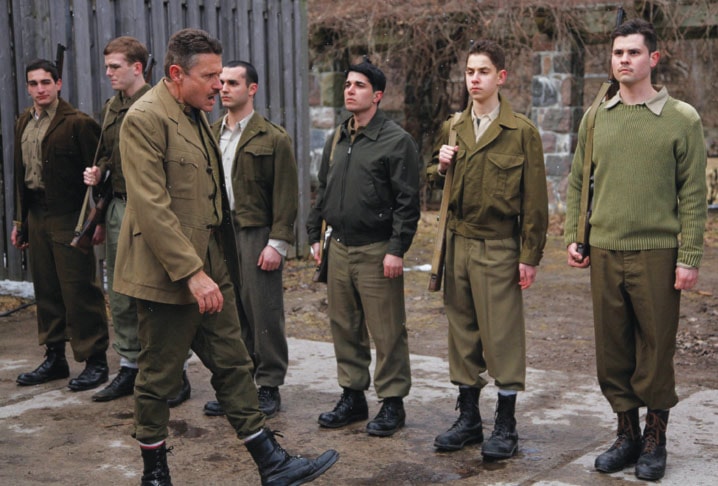TORONTO — In Quentin Tarantino’s Second World War action flick Inglourious Basterds, a ragtag group of Jewish-American soldiers agrees to go on a dangerous mission hunting Nazis behind enemy lines.
The deadly mercenaries are tasked with collecting 100 scalps apiece on their way to take out the Germans’ top military leaders.
Not surprisingly for a Tarantino film, it’s cartoonishly over the top and not at all historically accurate.
But there was just enough truth there for Canadian director Min Sook Lee to latch onto for The Real Inglorious Bastards, which airs Thursday on History.
She had previously helmed the similar documentary The Real MASH and was asked by History to produce another show with a compelling real-life tale that somehow mirrored the Tarantino film.
“I’m not a Tarantino fan — I hadn’t seen the film, I wasn’t familiar with the story,” she admits.
“So I had to watch the film and then start looking around for something that was similar in real life — and that took a while.”
She eventually came across the story of Operation Greenup, a covert mission ordered by the U.S. military’s Office of Strategic Services.
Jewish refugees Hans Wijnberg of Holland and Fred Mayer of Germany joined the U.S. army eager to help the Allied effort against Nazi forces. They met at an OSS training camp while learning guerilla warfare and would eventually work with Austrian Franz Weber, who had deserted from the German military.
“It felt like I had my chance to do what I set out to do — kill Nazis,” says Mayer in the documentary.
“That’s why all the Jewish boys joined.”
They parachuted onto a glacier in Germany so they could gather intelligence on the Brenner Pass, the main supply route into Italy. They landed in deep snow, without skis, and after a long journey through brutal wintry conditions, they reached a small hamlet, where they claimed to be members of a German alpine unit.
“These missions had a high rate of failure, they didn’t really know what they were doing, there was a lot of making things up as they went along,” says Min Sook.
“They started off with a thirst for vengeance, they were hungry to get behind enemy lines and they wanted to cause as much damage as they could.”
Through interviews and dramatic re-enactments, the documentary covers how the men then based themselves in safehouses and began sending information back to the U.S. while posing as Germans. Mayer used a stolen German uniform to blend in at an officers’ club and glean military intelligence. On one occasion, he was able to tip air forces to two dozen trains waiting in a rail yard — each 30- to 40-cars-long loaded with supplies — that were destined for the Italian front. They were bombed and destroyed.
Near the end of the war Mayer was captured, taken to a Gestapo prison and tortured for information about his partners. He refused to co-operate, held out long enough to be rescued and would later have a chance to enact revenge.
Mayer was recently honoured at a meeting of the OSS Society in Washington, D.C., where a clip of the documentary screened.
“Tarantino’s film is rather cartoonish and is quite ahistorical but the part of it that I think spoke to a widespread mainstream appetite was that idea of fighting back,” says Min Sook.
“Stories about resistance amongst Jews during the Second World War are less well known . . . but I think there’s more of a reclamation of that history happening.”
